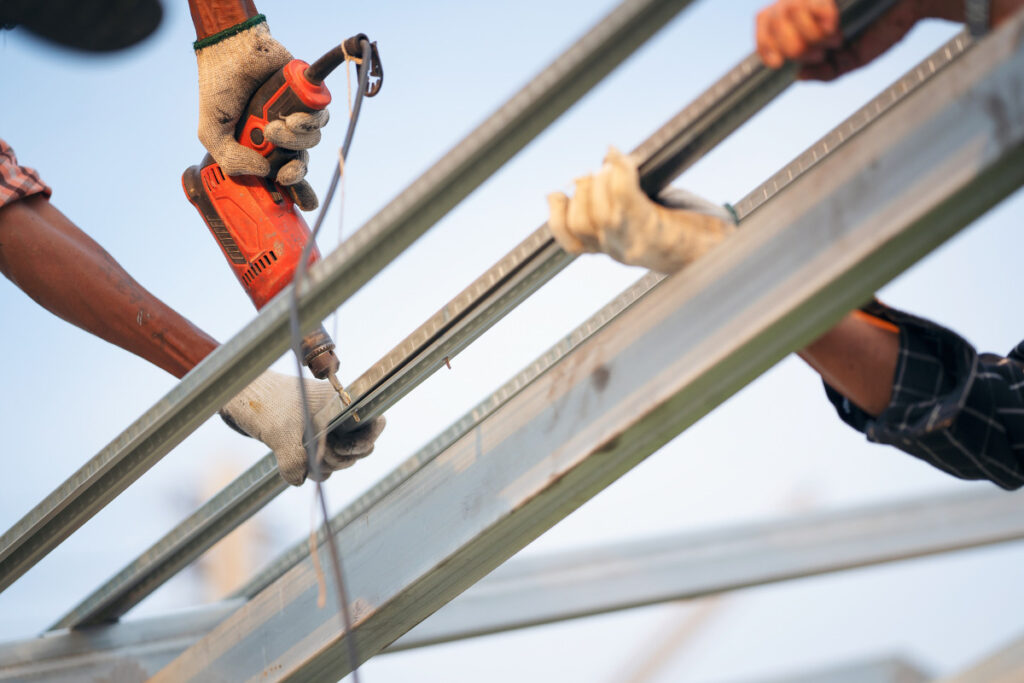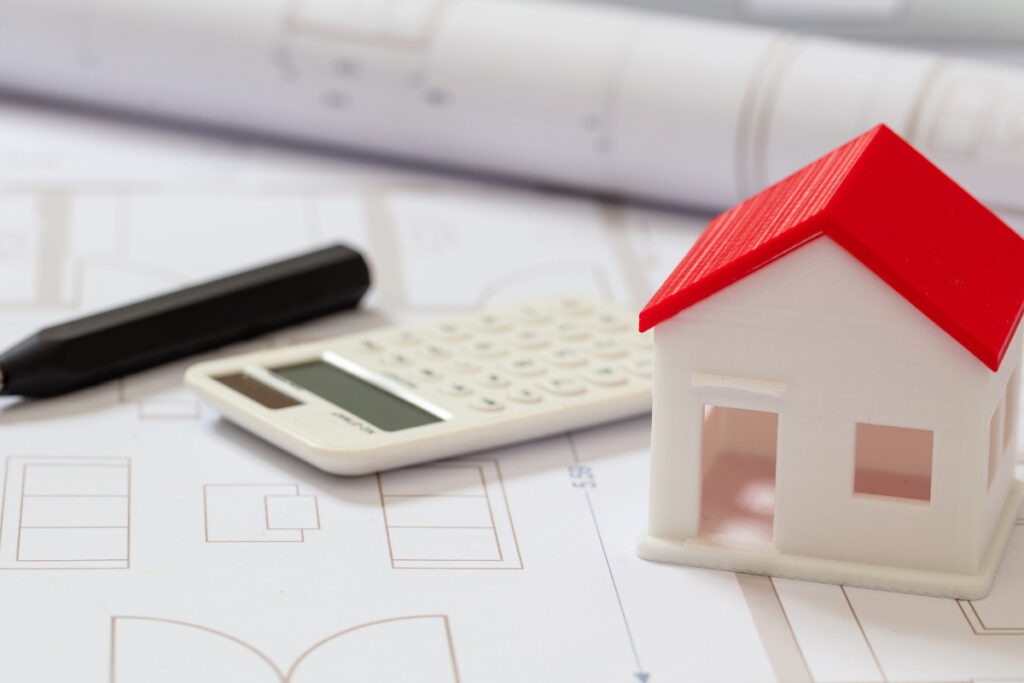Introduction
In recent years, homeowners have been baffled by the significant increase in roofing costs. This surge can be attributed to various factors, including increased demand for roofing products, a shortage of skilled labor, and rising raw material prices.
Additionally, natural disasters and severe weather events have further compounded these trends. In this blog post, we’ll explore the reasons behind this phenomenon and provide insights into how it affects you as a homeowner.
| Key Takeaways |
|---|
| The surge in roofing costs can be attributed to several factors such as increased demand for roofing products, a shortage of skilled labor, rising costs of raw materials, and impact from natural disasters. |
| Homeowners must prioritize regular maintenance and inspections while planning ahead for future projects to mitigate these costs. |
| Investing in sustainable alternatives like energy - efficient roofs can not only improve energy efficiency but also contribute positively towards environmental conservation efforts. |
| By researching prices from different suppliers and considering financing options, homeowners can minimize their expenses while ensuring high-quality workmanship for years to come. |
For more expert tips on solar, check out our Youtube channel: www.youtube.com/@dronequote?sub_confirmation=1
Factors Contributing To The Surge In Roofing Costs
Increased demand for roofing products, shortage of skilled labor, rising costs of raw materials, and the impact of natural disasters and severe weather events are the primary factors contributing to the surge in roofing costs.
Increased Demand For Roofing Products
Over the past few years, the demand for roofing products has experienced a significant surge, primarily driven by factors such as the booming housing market and increasing interest in home renovations.
With more people buying houses and investing in home improvement projects, there is an escalating need for high-quality roofing materials like asphalt shingles and metal panels.
This heightened demand inevitably pressures manufacturers to produce more significant roofing materials while maintaining quality standards. As with any industry that experiences increased consumer interest, suppliers can struggle to keep up with the rising demand levels, which often results in material shortages or longer production lead times.
This scarcity drives up prices as competition intensifies among consumers vying for limited resources.
Shortage Of Skilled Labor
One of the primary reasons behind the surge in roofing costs is the shortage of skilled labor. With fewer workers for roofing projects, contractors are forced to pay higher wages to attract and retain employees.
The shortage of skilled labor can be attributed to several factors, including an aging workforce and a lack of interest among younger generations in pursuing careers in construction.
As a result, not enough trained professionals are entering the field to meet demand.
To address this issue, companies are taking different approaches. Some invest in training programs to attract new talent and develop existing workers. Others embrace technology like drones and automated equipment to streamline processes and reduce reliance on manual labor.
Rising Costs Of Raw Materials
The rising costs of raw materials are another factor contributing to the surge in roofing costs. The cost of asphalt, one of the most commonly used roofing materials, has been steadily increasing due to rising oil prices and shipping delays.
In fact, the cost of PVC has increased by 40% in 2008 since 2008 due to these reasons. As a result, manufacturers are forced to pass these increased costs to consumers to maintain their profit margins.
Additionally, global issues such as the ongoing war between Russia and Ukraine have contributed to supply chain disruptions and further price increases for roofing materials like metal and shingles.
Impact Of Natural Disasters And Severe Weather Events
Natural disasters and severe weather events can significantly impact roofing costs. For instance, high winds and heavy rains can cause damage to roofs, leading to costly repairs or even complete replacement.
For example, Hurricane Harvey caused billions of dollars in damages across Texas in 2017, including extensive damage to homes’ roofs. Consequently, the surge in demand for roofing materials led to increased prices due to supply chain issues resulting from trucking shortages caused by the hurricane aftermaths.
Trends Driving The Boom In The Roofing Market
The surge in home renovations and new construction projects, along with an increased awareness of energy-efficient roofing options and changes in building codes and regulations, are just some of the trends driving the boom in the roofing market.
Surge In Home Renovations And New Construction Projects
Homeowners are increasingly investing in home renovations and new construction projects, contributing to the boom in the roofing market. In 2020 alone, there was a surge of nearly 14% in spending on residential remodeling projects.
As homeowners invest more money into revamping their homes, they’re also seeking high-quality roofing options that will boost their property’s value and last for years increased.
Additionally, as the housing market continues its upward trajectory, new construction projects have been on the rise.
Overall, the trend towards home renovation and new construction projects is pushing up roofing costs due to higher demand from homeowners for quality roof installations that can withstand harsh weather conditions while also adding long-term value to their properties.
Growing Awareness Of Energy-efficient Roofing Options
As homeowners become increasingly conscious of environmental concerns, there has been a growing awareness of energy-efficient roofing options. Energy-efficient roofs can help reduce the energy needed to heat and cool homes, leading to significant savings in utility costs.
For instance, metal roofing is highly durable and reflects sunlight away from the home, reducing the need for air conditioning during hot summer months. Meanwhile, white reflective coatings are designed to reflect heat from the sun instead of absorbing it, keeping homes cooler and extending roof life spans.
Overall, homeowners need to consider investing in sustainable alternatives when replacing their roofs as this will improve energy efficiency and contribute positively towards environmental conservation efforts according to recent trends over time.
Changes In Building Codes And Regulations
Changes in building codes and regulations have a significant impact on roofing costs. As new technologies and materials emerge, local governments often update their construction codes to ensure that buildings are safe, energy-efficient, and long-lasting.
These regulations affect both new construction projects and renovation work on existing homes. While the aim is to improve the overall quality of buildings, these updates often come at an additional cost for homeowners who must comply with them.
Awareness of building codes is crucial when selecting contractors to perform roof repairs or replacements. Experienced contractors who keep up-to-date with code requirements will provide high-quality workmanship and ensure that your home complies with local regulations for years.
How The Surge In Roofing Costs Affects Homeowners
Homeowners are directly affected by the surge in roofing costs, facing higher repair and replacement bills, potential safety hazards from delayed maintenance, and lower quality workmanship.
Higher Repair And Replacement Costs
The surge in roofing costs directly impacts homeowners, leading to higher repair and replacement costs. With the rise of raw materials and labor costs, roofers are forced to charge more for their services.
The size and slope of a home’s roof also affect replacement costs. The larger the roof size, the more expensive it will be to replace or repair.
To mitigate these rising expenses and avoid potential safety hazards associated with a poorly maintained roof, homeowners can take preventative measures such as prioritizing regular maintenance and inspections.
Delayed Maintenance And Repairs
Delaying maintenance and repairs on your roof can have severe consequences in the long run. Minor issues like cracked shingles or leaks can quickly escalate into larger, more costly problems if left unaddressed.
Ignoring these problems could lead to even higher roofing costs when significant damage occurs, such as rotting wood or mold growth.
To avoid these risks and mitigate rising roofing costs, prioritize regular inspections and timely repairs when needed. Catching potential issues early on can help prevent them from becoming more significant problems that are more difficult and expensive to fix.
Additionally, investing in high-quality roofing materials that require less maintenance can save homeowners money over time by reducing repair needs in the first place.
Potential Safety Hazards
Regarding the surge in roofing costs, potential safety hazards are also a concern for homeowners. Delayed maintenance and repairs due to high costs can lead to a weakened roof structure, increasing the risk of accidents such as falling debris or collapse.
Lower quality workmanship from unskilled laborers hired due to shortages can also result in poor installation and unsafe roofs. In addition, using lower-quality materials to cut corners on expenses can compromise the durability and safety of the roof.
Homeowners must prioritize regular maintenance and inspections, choose durable materials, and hire qualified professionals with proper certifications to mitigate these potential risks.
Lower Quality Workmanship
As roofing costs continue to surge, homeowners may be tempted to cut corners and choose the cheapest option available. However, opting for low-priced contractors can lead to lower-quality workmanship with potentially dangerous consequences.
When choosing a contractor, it’s essential to research and select one with a solid track record of high-quality workmanship and safety standards. Don’t be swayed by low-cost options without carefully reviewing their qualifications and previous projects.
Additionally, prioritizing regular maintenance and inspections from reputable professionals can help ensure that any minor issues are caught early before they become significant problems.
Strategies To Mitigate The Surge In Roofing Costs
Plan ahead for roofing projects by taking several important steps. First, ensure regular maintenance and inspections. Second, choose durable and long-lasting roofing materials. Third, research and compare prices from different suppliers. Lastly, consider financing options to mitigate the impact of rising roofing costs.
Plan Ahead For Roofing Projects
If you want to avoid the surge in roofing costs, here are some strategies to help you plan ahead for your roofing projects:
- Regular maintenance and inspections can help detect issues before they become major problems requiring costly repairs or replacement.
- Choose durable, long-lasting roofing materials that will withstand harsh weather conditions and require less maintenance.
- Research and compare prices from different suppliers to get the best value for your money.
- Prioritize roofing projects during off seasons when demand is lower, and prices are more reasonable.
- Consider financing options that can spread out the cost of a new roof over a more extended period, making it more manageable for homeowners on a tight budget.
By following these simple steps, homeowners can mitigate the impact of rising roofing costs and ensure their homes are safe, secure, and well-maintained without breaking the bank.
Choose Durable And Long-lasting Roofing Materials
Investing in durable and long-lasting roofing materials is an excellent strategy to mitigate increasing roofing costs. Consider the following options:
- Metal roofing: This type of roofing material is known for its durability, resistance to harsh weather conditions, and fire resistance properties.
- Slate: A premium option for homeowners looking for a long-lasting and beautiful roof that can last up to 100 years or more.
- Tile: An excellent choice for those in warmer climates as it is both heat and fire-resistant, with an average lifespan of around 50 years.
- TPO (Thermoplastic Olefin): A popular choice for commercial buildings due to its energy-efficient properties, low maintenance requirements, and lifespan of up to 30 years.
- EPDM (ethylene propylene diene monomer): Known for its exceptional durability, flexibility, and longevity of up to 50 years.
Choosing durable materials over asphalt shingles leads to longer-lasting roofs with low maintenance. Additionally, high-quality materials increase home value when selling.
Research And Compare Prices From Different Suppliers
If you’re looking to mitigate the surge in roofing costs, one strategy is to research and compare prices from different suppliers. Here are some tips to help you get started:
- Look for local suppliers: Local suppliers often offer better pricing than larger national companies.
- Get multiple quotes: Don’t settle for the first quote you receive. Shop around and get quotes from several different suppliers.
- Consider the total cost: Consider additional costs like delivery fees and installation charges when comparing prices.
- Ask about warranties: Some suppliers may offer better warranties than others, so be sure to ask about this when comparing prices.
- Check reviews: Before choosing a supplier, check online reviews to see what other customers have experienced with their products and services.
Remember that while finding an affordable supplier is important, price shouldn’t be the only factor you consider. Quality and durability are also crucial when it comes to roofing materials. Doing your research upfront can help you make an informed decision and save money in the long run by avoiding costly repairs or replacements.
Prioritize Regular Maintenance And Inspections
Regular maintenance and inspections are critical in mitigating the surge in roofing costs. Here are some strategies to prioritize them:
- Schedule a yearly inspection with a professional roofer to identify potential issues early.
- Keep an eye out for signs of damage, such as missing or cracked shingles, leaks, or water stains on ceilings.
- Clean gutters and downspouts regularly to prevent water buildup and damage to your roof.
- Trim trees around your home to prevent branches from falling onto your roof.
- Avoid walking on your roof, which can cause further damage or create safety hazards.
- Address any issues promptly to avoid more extensive and costly repairs or replacements down the road.
Regular maintenance and inspections help homeowners catch roofing problems early, saving them from costly repairs later on. This approach can help save money in the long run while ensuring that roofs remain safe, functional, and aesthetically pleasing.
Consider Financing Options
If the surge in roofing costs is causing financial strain, homeowners may want to consider financing options. This could include taking out a loan or applying for a credit card with promotional interest rates.
Homeowners can also look into financing programs manufacturers, contractors, and government agencies offer.
Researching and comparing different financing options is important before committing to one. Homeowners should pay attention to interest rates, fees, and repayment terms when evaluating their choices.
Overall, considering financing options can help alleviate some of the financial burden associated with roof repairs or replacements.
Conclusion
In conclusion, the surge in roofing costs can be attributed to increased demand for roofing products, a shortage of skilled labor, rising costs of raw materials, and the impact of natural disasters.
Homeowners must prioritize regular maintenance and inspections while planning future projects to mitigate these costs. With the growth of the roofing market and increasing awareness of energy-efficient options, it’s important to choose durable and long-lasting roofing materials that meet building codes and regulations.
When replacing a roof, it’s crucial to consider more than just labor and materials costs. Unforeseen repairs can quickly inflate expenses. That’s why strategies like researching and budgeting, choosing reputable contractors, negotiating fair contracts, and planning for maintenance are essential.
At DroneQuote, we understand the concerns raised by homeowners and building managers about rising labor costs. It’s important to grasp the factors behind these increases. You can make informed decisions for your roof replacements or repairs by gaining insight. Let us assist you in navigating the complexities of roofing projects.
FAQs
- Why have roofing costs seen a surge in recent years?
Rising material costs and increased demand for roof repairs and replacements drive roofing expenses. Additionally, higher labor and transportation expenses also contribute.
- What are the most significant contributors to the increase in roofing material costs?
The rise in roofing material costs can be attributed to two main factors. Firstly, supply chain disruptions caused by the COVID-19 pandemic have affected availability and increased prices. Secondly, government agencies imposing tariffs on imported materials have added to the cost.
- Can I do anything to offset high roofing costs?
Homeowners can potentially save money on roofing projects by scheduling regular maintenance inspections. By promptly addressing minor repairs, they can prevent more expensive issues.
- How long does a typical roof repair or replacement take, and what kind of cost should I expect?
The repair or replacement duration varies based scope of work, access points, weather, and severity of damage. It can range from days to weeks or even months for major structural changes. Pricing depends on location, contractor rates, and expertise, so thorough research is essential to avoid inflated fees.
General Facts
- The size of a home’s roof directly impacts its replacement cost.
- Roof square footage also impacts replacement costs.
- Roof slopes can also affect roofing costs.
- The waste factor is another factor that can impact the cost of a new roof.
- Since 2008, the price of PVC has risen by 40%, primarily due to increasing oil prices.
- The increased demand for roofing materials and the ongoing Russia-Ukraine conflict contribute to the rise in roofing prices.
- The rise in crude oil and shipping delays have contributed to the price increase in roofing materials.
- Several factors, including roof size and material choice, will affect roof replacement costs.
- In 2011, the United States roofing market exceeded $15 billion, with an expected 3.50% industry growth.



